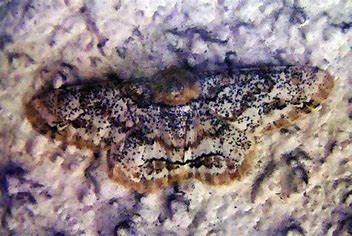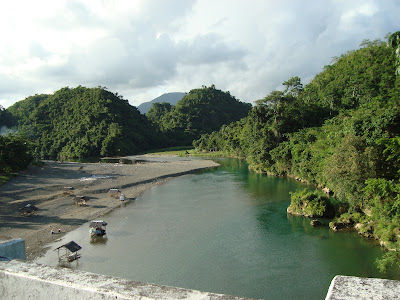DON'T CUT THE TREES, DON'T
Dr Abe V Rotor
“To see the world in a grain of sand
And a heaven a wild flower,
Hold infinity in the palm of your hand
And eternity in an hour,”
William Blake, Auguries of Innocence
Many years ago I recited this verse before my teachers in literature in high school, Mrs. Socorro Villamor and Miss Leonor Itchon, at the Colegio de la Imaculada Concepcion, now Divine Word College of Vigan. Hesitatingly I proceeded to interpret it.
Because I lived on the farm, the world I knew then was a physical one and the kind of life associated with it was as simple as the passing of seasons - when the rains come and the fields turn into a carpet of green until harvest time comes when the grains turn gold. I recalled my childhood in this poem I wrote years later.
Because I lived on the farm, the world I knew then was a physical one and the kind of life associated with it was as simple as the passing of seasons - when the rains come and the fields turn into a carpet of green until harvest time comes when the grains turn gold. I recalled my childhood in this poem I wrote years later.

Ambiance of Autumn in the Philippines in acrylic by the author c 2002
Childhood is when nobody misses
The morning before the sun rises,
Before the herons stake for fish,
And finches chirp in the trees.
War is fought with kites and fishing poles,
In hide-and-seek and barefoot races;
Faith grows with seasons the sky extols,
Virtues all that friendship embraces.
Summer is short, rainy days are long,
All these are but passing imagery,
For the young can’t wait, yet all along
The years, remains a lasting memory.
The morning before the sun rises,
Before the herons stake for fish,
And finches chirp in the trees.
War is fought with kites and fishing poles,
In hide-and-seek and barefoot races;
Faith grows with seasons the sky extols,
Virtues all that friendship embraces.
Summer is short, rainy days are long,
All these are but passing imagery,
For the young can’t wait, yet all along
The years, remains a lasting memory.
To recite again Blake’s verse brings out a larger view of life and the world. The innocence of childhood has given way to realities of adult life. The environment has lost much of its pristine nature. A revolution of knowledge has reached global proportion.
The essence of the verse now touches the dimension of philosophy rising above its own literary meaning. Its humility has turned into a challenge, like Markham raising a social issue against society, viewing poverty in Millet’s romantic painting, The Gleaners.
Indeed, progress has brought folly to man to dream of power – even to the point of transgressing creation, a dream that borders between reason and passion, temperance and lust, waking up a sleeping god in man that drives him to wrest control over time and space, pursue beauty and pleasure as he wishes. He has cracked the atom and the DNA, and amassed tremendous wealth and power. And he has started to probe the universe. Which only means man is playing God, the old sin of disobedience. “Quo vadis, Homo sapiens?”
The essence of the verse now touches the dimension of philosophy rising above its own literary meaning. Its humility has turned into a challenge, like Markham raising a social issue against society, viewing poverty in Millet’s romantic painting, The Gleaners.
Indeed, progress has brought folly to man to dream of power – even to the point of transgressing creation, a dream that borders between reason and passion, temperance and lust, waking up a sleeping god in man that drives him to wrest control over time and space, pursue beauty and pleasure as he wishes. He has cracked the atom and the DNA, and amassed tremendous wealth and power. And he has started to probe the universe. Which only means man is playing God, the old sin of disobedience. “Quo vadis, Homo sapiens?”
Heritage trees, Mt. Makiling, UPLB Laguna
After retiring from government service and subsequently finding a niche in the academe, I found time once again to read the works of my favorite authors such as John Milton’s Paradise Lost and Paradise Regained and Ernest Hemingway’s The Old Man and the Sea.I found again Alexander Pope, Thomas Gray, William Shakespeare, and Henry Wadsworth Longfellow - and of course, our very own Ophelia Dimalanta, Jose Villa, Sionil Jose, NVM Gonzales, Nick Joaquin, Rolando Carbonel, to name some local literary giants. From them I found valuable lessons, not only about nationalism, culture and the art of living, but techniques and style of using English, being a second language to many of us.
Henry David Thoreau (Walden Pond) and the great naturalist Charles Darwin (The Origin of Species), brought me close to Nature and led me to experiment in combining ecology and literature.
As I was writing this book, I could not help but ask myself, Will man ever regain his place in Paradise while he is on earth?
I can only imagine what the great French sculptor Auguste Rodin must have been thinking while at work at his masterpiece, The Thinker. What inspired Michelangelo's The Creation showing an omnipotent Creator reaching out for Adam at a spark’s distance from His finger? I remember other thought-provoking masterpieces like Salvador Dali’s Melting Clocks, and Vincent Van Gogh’s Starry Night. Perhaps Helen Keller who wrote, If I were given Three Days to See, saw more about the world than some people do who are not blind.
From where I was transfixed in reflection, absorbed in serious thoughts, a flock of pigeons soared into the sky. A chilly breeze whistled through the trees and joined the lilting children playing, and the sound of busy feet on the camino real. Time passed and a kind of stillness settled. I recited the old verse again. It brought nostalgic reflection of the past and the sinking sun.
As I prepared to leave for home I noticed a weed growing along the path that I was to take. I gently picked the lowly plant and examined it against the reddening sky. Why it bore flowers in disguise!
From here I began writing Don’t Cut the Trees, Don’t.~
Haunting shadow of a standing dead tree (camphor, Cinnamomum camphora) UST campus; requiem to a giant balete tree (Ficus benjamina), Lagro Subdivision QC.
--------------------
Don’t Cut the Trees, Don’t is a collection of ecology poems and paintings of nature. The tree is taken to represent the environment. Each poem and each painting is like a leaf of a tree each revealing a little of the many marvels of this unique creation. Each poem and each painting is a plea on behalf of this new vision and of this new ethics. Concealed behind each poem and each painting is the spirit of the author, Dr. Abercio V. Rotor, a man whose love and passion for the environment is well-known. (Armando F. De Jesus, Ph.D., Dean, UST Faculty of Arts and Letters)
It is a substantial collection, departing from the usual stale air of solitariness and narcissism which permeates most poetry today. It is therefore a welcome contribution to Philippine poetry in English, livened by visuals that add color to the poetic images. The oeuvre is not only pleasurable because of this. The poetic ability of the poet himself enriches the whole exciting poetic experience, a blurring of the line separating man from the rest of the living creatures outside. Every poem indeed becomes “flowers in disguise” using the poet’s own words. (Ophelia A. Dimalanta, Ph.D. Director, Center for Creative Writing and Studies,UST ) ~
It is a substantial collection, departing from the usual stale air of solitariness and narcissism which permeates most poetry today. It is therefore a welcome contribution to Philippine poetry in English, livened by visuals that add color to the poetic images. The oeuvre is not only pleasurable because of this. The poetic ability of the poet himself enriches the whole exciting poetic experience, a blurring of the line separating man from the rest of the living creatures outside. Every poem indeed becomes “flowers in disguise” using the poet’s own words. (Ophelia A. Dimalanta, Ph.D. Director, Center for Creative Writing and Studies,

































